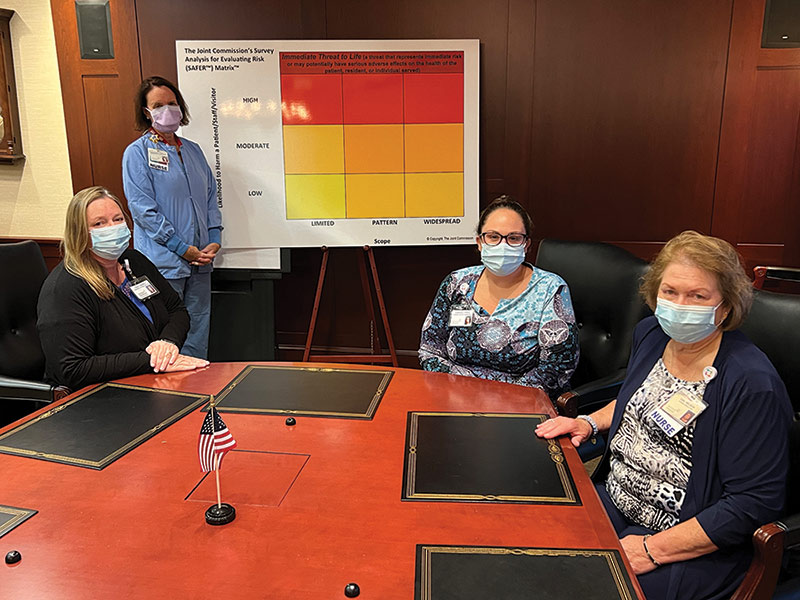
It’s 6:30 on a Monday morning. Hartford Hospital Director of Quality and Safety Perioperative Services Maggie Hanbury, RN, MPA, is on her phone hitting the refresh button with the intensity of someone trying to score tickets to the hottest Broadway show.
Simultaneously, Director of Regulatory and Accreditation and Nursing Operations Gail Nelson, MS, RN, is going through the same ritual. But it’s not tickets that are at stake. They are awaiting word that The Joint Commission (TJC) will be coming that day to survey the hospital and its various departments for the first time in more than three years.
Shortly after 7, one final refresh reveals that the surveyors are on the way.
Hanbury and Nelson had been preparing for the visit for months with Data Manager Kim Pires, business Systems Analyst Tracy Hespelt and colleagues from numerous other departments. It is an orchestral piece with many moving parts, to be played out in a week-long visit.
Here’s a behind-the-scenes look at some of the work that goes into a TJC visit:
Preparing for the day
- Based on previous visits, Nelson expects TJC will send nine surveyors. Knowing the survey isn’t likely to straddle a weekend, Mondays are the most likely choice for the team to arrive. “They notify us the day they are going to arrive,” Nelson shares. “If we don’t hear, we wait until the next week.” n To determine the length and scope of the survey, TJC uses information the hospital team provides on things like number of locations, quantity of ED visits, ambulatory visits and types of services.
- TJC’s Survey Activity Guide is used to mobilize the hospital team. The guide outlines expectations, timelines and objectives, serving as a valuable planning tool.
- Champions are assigned to manage chapters of the guide. This survey, Nelson managed the nursing chapter, creating and following a punch list of items required by the standards and expectations of the survey. Hanbury handled the perioperative chapters, working with Jennifer Ash, APRN, director of quality and safety for patient care services, and Jennifer Martin, RN, MPH, a quality and safety nurse in the Department of Medicine, to pull together an electronic regulatory readiness tool in REDCap™.
- Using tip sheets shared every Wednesday in leadership rounds, hospital colleagues are engaged and prepared for the survey. Daily messaging and visual management boards also cascade important information.
The day of
- Once the team receives the news, hospital-wide mobilization begins. Departments are notified and the necessary materials are produced to ensure the visit goes as smoothly as possible.
- The nine surveyors fan out across the hospital, visiting outpatient clinics, units and departments. With them are scribes, hospital personnel who support the surveyor.
- Records are reviewed and tracer methodology used to follow patient experiences in the hospital and examine coordination of care, something largely driven by Centers for Medicare and Medicaid requirements.
- On units, surveyors talk with colleagues, patients and family members.
- Because this year’s survey emphasized the hospital’s high reliability organization (HRO) journey, surveyors met with leadership to evaluate topics like culture of safety, infection control, medical staff credentialing and medication management, as well as steps being taken by the organization as it pursues HRO status.
After the survey
- TJC posts findings on the last day of the survey, leaving a preliminary report with the team.
- The final report arrives a few days later.
- After analyzing the report, the team drafts and implements an action plan to address any necessary items.
- Experiences and insight are shared across Hartford HealthCare to help other hospital teams during their own survey.
- Within 45 days, TJC will return to reevaluate any areas of concern.
